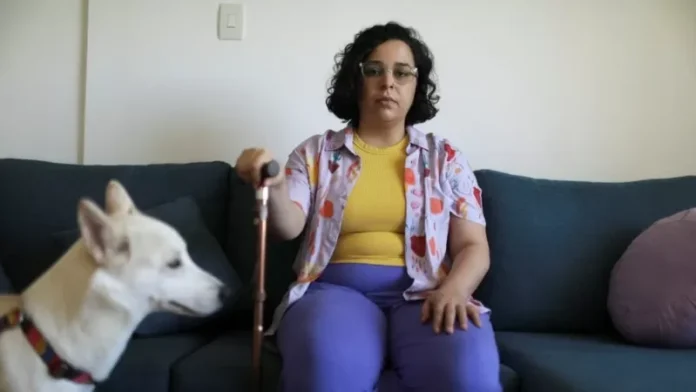Living with Long COVID: Understanding the Challenges and Finding Hope
London – Living with long COVID has become a harsh reality for millions of people around the world. Among them is Wachuka Gichohi, a Kenyan businesswoman who has endured four years of debilitating symptoms such as fatigue, pain, panic attacks, and more. Her journey has been marked by ups and downs, but one thing remains constant – the difficulty of hearing certain phrases that are usually meant to be comforting.
“Feel better soon” or “Wishing you a quick recovery” may seem like harmless statements, but for Gichohi, they are a reminder of the harsh reality of long COVID. Like many others, she has come to accept that a full recovery may not be possible for her.
Recent scientific studies have shed new light on the experience of long COVID patients like Gichohi. These studies suggest that the longer someone is sick, the lower their chances of making a full recovery. The best window for recovery is in the first six months after getting COVID-19, with better odds for those who had a less severe initial illness or are vaccinated. However, for patients who have been struggling for more than two years, the chance of a full recovery is very slim.
As more research is conducted, it is becoming increasingly clear that long COVID should be viewed as a chronic condition that can be treated to improve patients’ lives rather than being cured. This is similar to other chronic conditions such as heart disease or arthritis. It is essential to understand that the impact of long COVID goes beyond physical symptoms and can have a significant impact on a person’s mental health and overall well-being.
The term “persistent long COVID” should be used to describe those who have been dealing with symptoms for more than six months. This term is crucial in helping us understand the chronic nature of this condition and how it can be managed. It is also essential to recognize that long COVID can include features of other chronic conditions such as myalgic encephalomyelitis/chronic fatigue syndrome (ME/CFS) or fibromyalgia, which can be risk factors for it.
Unfortunately, as the world shifts its focus towards recovering from the pandemic, the attention on long COVID is starting to dwindle. In wealthy countries that typically fund large-scale studies, there is a significant decrease in funding and attention towards long COVID. In low- and middle-income countries, this attention was never there to begin with. This lack of attention and funding could have severe consequences for the millions of people living with long COVID.
According to a study conducted by the UK’s Office for National Statistics, there are approximately 2 million people who have self-reported long COVID symptoms as of March 2021. Out of these, 30.6% reported experiencing symptoms for at least three years. Globally, it is estimated that between 65 million and 200 million people have long COVID. This means that between 19.5 million and 60 million people could continue to face years of impairment based on the initial estimates.
While countries like the United States and Germany continue to fund research on long COVID, other wealthy countries are starting to shift their focus elsewhere. This is concerning for those living with this condition as it could mean a lack of progress in understanding and managing long COVID. It is crucial to continue investing in research, especially in understanding the risk factors and potential treatments for this chronic condition.
One of the biggest challenges for those living with long COVID is the lack of proven diagnostic tests or treatments. While scientists have made progress in identifying potential risk factors and theories about the cause of long COVID, there is still a lot to be learned. This can make it difficult for patients to receive a proper diagnosis and treatment plan, leaving them to manage their symptoms in a piecemeal manner.
For some patients, antihistamines and other commonly available treatments can help alleviate their symptoms. However, for others, mainstream medicine may not be as effective. This is where a more holistic approach to treatment may be necessary. Patients like Gichohi have found relief through treatments such as acupuncture and trauma therapy, along with managing their activity levels and finding a less stressful environment to live in.
It is vital to shift the focus from “chasing recovery” to living in the new reality for long COVID patients. Acceptance and learning to cope with the symptoms can have a significant impact on a person’s quality of life. While research continues to progress

